- Home
- Peter Tremayne
Smoke in the Wind
Smoke in the Wind Read online
Smoke In The Wind
PETER TREMAYNE
www.headline.co.uk
Copyright © 2001 Peter Tremayne
The right of Peter Tremayne to be identified as the Author of the Work has been asserted by him in accordance with the Copyright, Designs and Patents Act 1988.
Apart from any use permitted under UK copyright law, this publication may only be reproduced, stored, or transmitted, in any form, or by any means, with prior permission in writing ot the publishers or, in the case of reprographie production, in accordance with the terms of licences issued by the Copyright Licensing Agency.
First published as an Ebook by Headline Publishing Group in 2010
All characters in this publication are fictitious and any resemblance to real persons, living or dead, is purely coincidental.
eISBN : 978 0 7553 7268 3
This Ebook produced by Jouve Digitalisation des Informations
HEADLINE PUBLISHING GROUP
An Hachette UK Company
338 Euston Road
London NW1 3BH
www.headline.co.uk
www.hachette.co.uk
Table of Contents
Title Page
Copyright Page
Dedication
Epigraph
Chapter One
Chapter Two
Chapter Three
Chapter Four
Chapter Five
Chapter Six
Chapter Seven
Chapter Eight
Chapter Nine
Chapter Ten
Chapter Eleven
Chapter Twelve
Chapter Thirteen
Chapter Fourteen
Chapter Fifteen
Chapter Sixteen
Chapter Seventeen
Chapter Eighteen
Chapter Nineteen
Chapter Twenty
Chapter Twenty-one
Epilogue
Peter Tremayne is the fiction pseudonym of a well-known authority on the ancient Celts, who utilises his knowledge of the Brehon law system and seventh-century Irish society to create a new concept in detective fiction.
Peter Tremayne’s nine previous Sister Fidelma novels, most recently The Monk who Vanished, Act of Mercy and Our Lady of Darkness, are also available from Headline, as is a Sister Fidelma short story collection, Hemlock at Vespers.
‘The background detail is brilliantly defined . . . Wonderfully evocative’ The Times
‘The Sister Fidelma books give the readers a rattling good yarn. But more than that, they bring vividly and viscerally to life the fascinating lost world of the Celtic Irish. I put down The Spider’s Web with a sense of satisfaction at a good story well told, but also speculating on what modern life might have been like had that civilisation survived’ Ronan Bennett
‘An Ellis Peter competitor . . . the background detail is marvellous’ Evening Standard
‘A brilliant and beguiling heroine. Immensely appealing’ Publishers Weekly
‘A treasure trove of small gems for historical mystery fans’ Booklist
To discover more about the world of Sister Fidelma, visit her own website at www.sisterfidelma.com
For David R. Wooton of Arkansas, USA
webmaster of the Sister Fidelma Mysteries -
Official Website
www.sisterfidelma.com
with gratitude for your support and encouragement
God arises and his enemies are scattered; those who hate him flee before him, driven away like smoke in the wind . . .
Psalm 68
HISTORICAL NOTE
The Sister Fidelma mysteries are set mainly in Ireland during the mid-seventh century AD.
This story, however, takes place while Fidelma and her companion in adventure, the Saxon Brother Eadulf, are en route to Canterbury, the primacy of the Anglo-Saxon kingdoms. They have been forced ashore by a storm in the kingdom of Dyfed, in the south-west of what is now modern Wales.
Sister Fidelma is not simply a religieuse, a former member of the community of St Brigid of Kildare. She is also a qualified dálaigh, or advocate of the ancient law courts of Ireland. As this background will not be familiar to many readers, my Historical Note is designed to provide a few essential points of reference to enable the stories to be better appreciated.
The Ireland of Fidelma’s day consisted of five main provincial kingdoms; indeed, the modern Irish word for a province is still cúige, literally ‘a fifth’. Four provincial kings - of Ulaidh (Ulster), of Connacht, of Muman (Munster) and of Laigin (Leinster) - gave their qualified allegiance to the Ard Rí or High King, who ruled from Tara, in the ‘royal’ fifth province of Midhe (Meath), which means the ‘middle province’. Even among the provincial kingdoms, there was a decentralisation of power to petty-kingdoms and clan territories.
But in this story we also encounter the emergent Welsh kingdoms, still in a state of flux, as the original Britons, whom the Saxons called Welisc (foreigners), were pushed westward from the territories they had occupied for nearly fifteen hundred years by the invading Jutes, Angles and Saxons. In Fidelma’s day, Devon (Dumnonia) and Cornwall (Curnow) were still Celtic, as was Cumberland (Rheged). North Wales was divided between two main kingdoms, Gwynedd and Powys; but south Wales was divided between eight smaller kingdoms of which Dyfed and Ceredigion were in conflict over who should be dominant.
Dyfed, the home of the famous abbey of the patron saint of Wales, St David (Dewi Sant), had actually been settled by the Irish of the Dési. Its early kings bore Irish names. The Welsh King Lists show that the famous Hywel Dda (AD 905-950) descended from King Eochaid of Dyfed who ruled c. AD 400. Hywel Dda was arguably the greatest of Welsh kings whose authority extended over all Wales. It was Hywel Dda who called a great conference in Dyfed which lasted for six weeks during which representatives of all the territories of Wales, under the chairmanship of a lawyer called Blegywryd, set forth the laws of the country in their first known codified form. These law books were popularly known as ‘The Laws of Hywel Dda’. However, they represented an ancient legal tradition among the Celtic peoples so that comparisons between the Brehon Laws of Ireland and the Laws of Hywel Dda can clearly be made.
It was this common legal tradition that catches the interest of Fidelma in the current story.
However, we should remind ourselves of Fidelma’s own culture, from which she views this kingdom of Dyfed, and discover how she could be an advocate of her country’s legal system.
The law of primogeniture, the inheritance by the eldest son or daughter, was an alien concept in Ireland. Kingship, from the lowliest clan chieftain to the High King, was only partially hereditary and mainly electoral. Each ruler had to prove himself or herself worthy of office and was elected by the derbhfine of their family - a minimum of three generations from a common ancestor gathered in conclave. If a ruler did not pursue the commonwealth of the people, they were impeached and removed from office. Therefore the monarchical system of ancient Ireland had more in common with a modern-day republic than with the feudal monarchies which had developed in medieval Europe.
Ireland, in the seventh century AD, was governed by a system of sophisticated laws called the Laws of the Fénechus, or land-tillers, which became more popularly known as the Brehon Laws, deriving from the word breitheamh - a judge. Tradition has it that these laws were first gathered in 714 BC by order of the High King, Ollamh Fódhla. Over a thousand years later, in AD 438, the High King, Laoghaire, appointed a commission of nine learned people to study, revise and commit the laws to the new writing in Latin characters. One of those serving on the commission was Patrick, eventually to become patron saint of Ireland. After three years, the commission produced a written text of the laws which is the first known codi
fication.
It will be seen that the Welsh law system was not codified, so far as is known, for another five hundred years but, nevertheless, like the Irish system, it was the result of a sophisticated oral tradition or of a manuscript codification long since lost. Certainly, influences by the Roman occupation and then by contact with the Roman Church coloured the Welsh law. Yet still the vibrant Celtic origin shows through.
The first complete surviving texts of the ancient laws of Ireland are preserved in an eleventh-century manuscript book in the Royal Irish Academy, Dublin. It was not until the seventeenth century that the English colonial administration in Ireland finally suppressed the use of the Brehon law system. To even possess a copy of the Irish law books was punishable often by death or transportation.
Welsh law survived until the Acts annexing Wales into England which also enforced English language, law and custom there in 1536 and 1542. Some eighty law manuscripts in Welsh and Latin survive, mainly from the twelfth to sixteenth centuries.
In Ireland, the law system was not static, and every three years at the Féis Temhrach (Festival of Tara) the lawyers and administrators gathered to consider and revise the laws in the light of a changing society and its needs.
Under these laws, women occupied a unique place. The Irish laws gave more rights and protection to women than any other Western law code at that time or until recent times. Women could, and did, aspire to all offices and professions as co-equals with men. They could command their people in battle as warriors, be political leaders, local magistrates, poets, artisans, physicians, lawyers and judges. We know the names of many female judges of Fidelma’s period - Bríg Briugaid, Áine Ingine Iugaire and Darí among others. Darí, for example, was not only a judge but the author of a noted law text written in the sixth century AD.
Women were protected by law against sexual harassment, against discrimination, against rape. They had the right of divorce on equal terms from their husbands, with equitable separation laws, and could demand part of their husband’s property as a divorce settlement; they had the right of inheritance of personal property and the right of sickness benefits when ill or hospitalised. Ancient Ireland had Europe’s oldest recorded system of hospitals. Seen from today’s perspective, the Brehon Laws seemed to enshrine an almost ideal society.
This background, and its strong contrast to Ireland’s neighbours, should be understood in order to appreciate Fidelma’s role in these stories.
Fidelma went to study law at the bardic school of the Brehon Morann of Tara and, after eight years of study, she obtained the degree of anruth, only one degree below the highest offered in either bardic or ecclesiastical universities in ancient Ireland. The highest degree was ollamh, which is still the modern Irish word for a professor. Fidelma’s studies were in both the criminal code of the Senechus Mór and the civil code of Leabhar Acaill. Thereby, she became a dálaigh or advocate of the law courts.
Her main role could be compared to a modern Scottish sheriff-substitute whose job is to gather and assess the evidence, independent of the police, to see if there is a case to be answered. The modern French juge d’instruction fulfils a similar role. However, sometimes Fidelma was faced with the task of prosecuting in the courts or defending or even rendering judgments in minor cases when a Brehon was not available.
In those days, most of the professional or intellectual classes were members of the new Christian religious houses, just as, in previous centuries, all members of the professions and intellectuals had been Druids. Fidelma became a member of the religious community of Kildare, founded in the late fifth century by St Brigid. But by the time the action in this story takes place, Fidelma has left Kildare in disillusionment. The reason why may be found in the title story of the Fidelma short story collection Hemlock at Vespers.
While the seventh century AD was considered part of the European Dark Ages, for Ireland it was a period of Golden Enlightenment. Students from every corner of Europe flocked to the Irish universities to receive their education, including the sons of many of the Anglo-Saxon kings. At the great ecclesiastical university of Durrow at this time, it is recorded that no fewer than eighteen different nations were represented among the students. At the same time, Irish male and female missionaries were setting out to return a pagan Europe to Christianity, establishing churches, monasteries, and centres of learning throughout Europe as far east as Kiev, in the Ukraine, as far north as the Faroes, and as far south as Taranto, in southern Italy. Ireland was a byword for literacy and learning.
However, the Celtic Church of Ireland was in constant dispute with Rome on matters of liturgy and ritual. Rome had begun to reform itself in the fourth century, changing its dating of Easter and aspects of its liturgy. The Celtic Church and the Eastern Orthodox Church refused to follow Rome, but the Celtic Church was gradually absorbed by Rome between the ninth and eleventh centuries while the Eastern Orthodox Church has continued to remain independent. The Celtic Church of Ireland, in Fidelma’s day, was much concerned with this conflict so that it is impossible to write of Church matters without referring to the philosophical warfare existing at the time.
One thing that was shared by both the Celtic Church and Rome in the seventh century was that the concept of celibacy was not universal. There had always been ascetics in the Church who sublimated physical love in a dedication to the deity, and at the Council of Nice in AD 325 clerical marriages had been condemned (but not banned) in the Western Church. The concept of celibacy arose in Rome mainly from the customs practised by the pagan priestesses of Vesta and the priests of Diana.
By the fifth century, Rome had forbidden its clerics from the rank of abbot and bishop to sleep with their wives and, shortly after, even to marry at all. The general clergy were discouraged from marrying by Rome but not forbidden to do so. Indeed, it was not until the reforming papacy of Leo IX (AD 1049-1054) that a serious attempt was made to force the Western clergy to accept universal celibacy. The Celtic Church took centuries to give up its anti-celibacy attitude and fall into line with Rome, while in the Eastern Orthodox Church priests below the rank of abbot and bishop have retained their right to marry until this day.
An awareness of these facts concerning the liberal attitudes towards sexual relationships in the Celtic Church is essential towards understanding the background to the Fidelma stories.
The condemnation of the ‘sin of the flesh’ remained alien to the Celtic Church for a long time after Rome’s attitude became a dogma. In Fidelma’s world, both sexes inhabited abbeys and monastic foundations, which were known as conhospitae, or double houses, where men and women lived and raised their children in Christ’s service.
Fidelma’s own house of St Brigid of Kildare was one such community of both sexes during her time. When Brigid established her community of Kildare (Cill Dara - church of the oaks) she invited a bishop named Conláed to join her. Her first surviving biography, completed fifty years after her death in AD 650, during Fidelma’s lifetime, was written by a monk of Kildare named Cogitosus, who makes it clear that it continued to be a mixed community in his day.
It should also be pointed out that, demonstrating their co-equal role with men, women were priests of the Celtic Church in this period. Brigid herself was ordained a bishop by Patrick’s nephew, Mel, and her case was not unique. In the sixth century, Rome actually wrote a protest at the Celtic practice of allowing women to celebrate the divine sacrifice of Mass.
Unlike the Roman Church, the Irish Church did not have a system of ‘confessors’ where ‘sins’ had to be confessed to clerics who then had the authority to absolve those sins in Christ’s name. Instead, people chose a ‘soul friend’ (anam chara) out of clerics or laity, with whom they discussed matters of emotional and spiritual well-being.
To help readers more readily identify personal names, a list of principal characters is given.
To some English readers, the Welsh names may look confusing. I will attempt to explain the most difficult Welsh phonetics which English
readers apparently encounter. C is always hard as in ‘cat’ but CH is as in the composer ‘Bach’. DD is pronounced ‘th’ as in ‘them’. LL as in ‘Llanwda’, ‘Llanpadern’ etc is a sound that does not occur in English. To make it correctly, one places the tongue on the roof of the mouth near the teeth as if to pronounce ‘l’ then blow voicelessly. In desperation one might resort to the sound ‘ch’lan’. TH is pronounced as in ‘cloth’. U is usually as in ‘tea’ or ‘tin’. W is as in ‘boon or ‘cook’. Y as in ‘tea’ or ‘run’. For example, Cymru (Wales) is Kum-ree. Thus the name of the chieftain Gwnda is pronounced ‘G’oon-da’.
Finally, some readers have written to me arguing that I am being anachronistic by giving distances in the modern metric system. In this respect the historian must give way to the storyteller to translate for his readers a modern equivalent of the Irish measurements of Fidelma’s day. It would otherwise be too cumbersome to explain what was meant by an ordlach, bas, troighid, céim, deis-céim, fertach and forrach.
How to Pronounce Irish Names and Words
As the Fidelma series has become increasingly popular, many English-speaking fans have written wanting assurance about the way to pronounce the Irish names and words.
Irish belongs to the Celtic branch of the Indo-European family of languages. It is closely related to Manx and Scottish Gaelic and is a cousin of Welsh, Cornish and Breton. It is a very old European literary language. Professor Calvert Watkins of Harvard maintained it contains Europe’s oldest vernacular literature, Greek and Latin being a lingua franca. Surviving texts date from the seventh century AD.

 The Shapeshifter's Lair
The Shapeshifter's Lair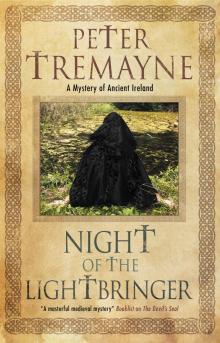 Night of the Lightbringer
Night of the Lightbringer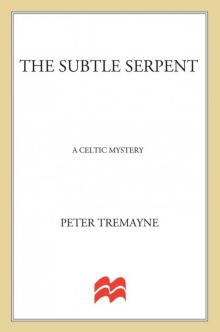 The Subtle Serpent
The Subtle Serpent Smoke in the Wind
Smoke in the Wind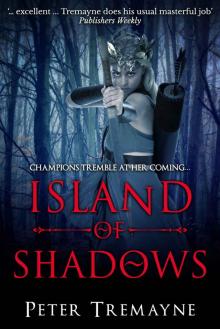 Island of Shadows
Island of Shadows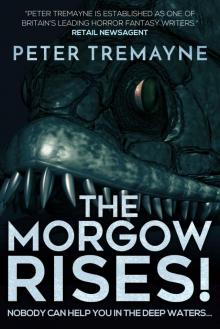 The Morgow Rises!
The Morgow Rises!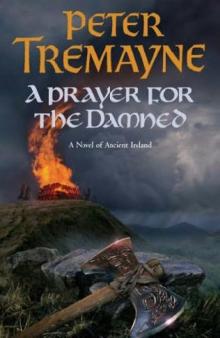 A Prayer for the Damned sf-17
A Prayer for the Damned sf-17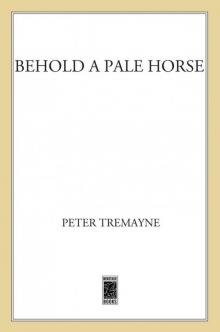 Behold a Pale Horse
Behold a Pale Horse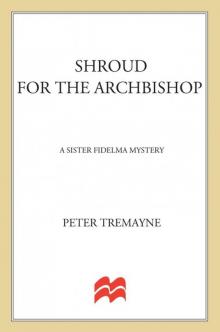 Shroud for the Archbishop
Shroud for the Archbishop The Banshee (sister fidelma)
The Banshee (sister fidelma)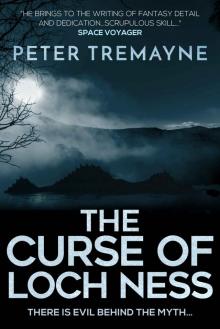 The Curse of Loch Ness
The Curse of Loch Ness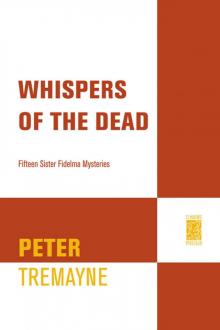 Whispers of the Dead
Whispers of the Dead Behold a Pale Horse sf-22
Behold a Pale Horse sf-22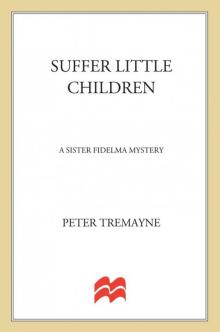 Suffer Little Children
Suffer Little Children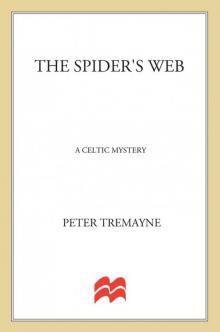 The Spider's Web
The Spider's Web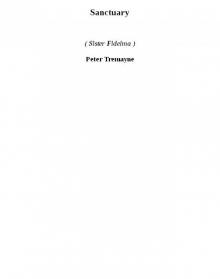 Sanctuary (sister fidelma)
Sanctuary (sister fidelma)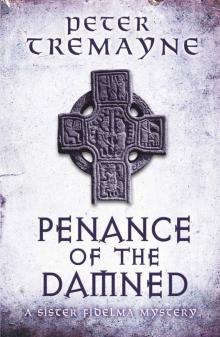 Penance of the Damned (Sister Fidelma)
Penance of the Damned (Sister Fidelma)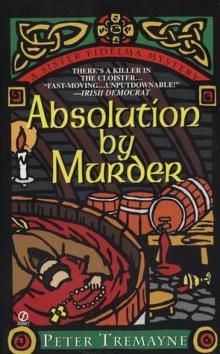 Absolution by Murder
Absolution by Murder A Scream From The Sepulchre
A Scream From The Sepulchre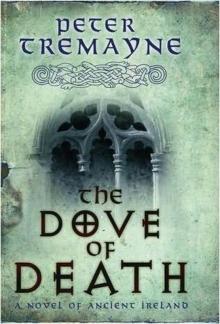 The Dove of Death sf-20
The Dove of Death sf-20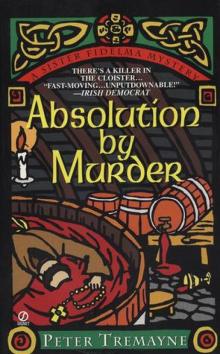 Absolution by Murder sf-1
Absolution by Murder sf-1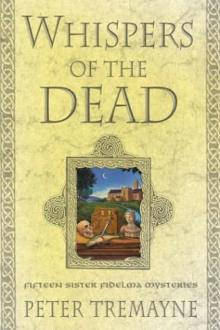 Whispers of the Dead sf-15
Whispers of the Dead sf-15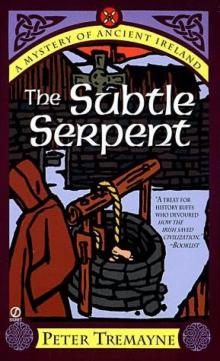 The Subtle Serpent sf-4
The Subtle Serpent sf-4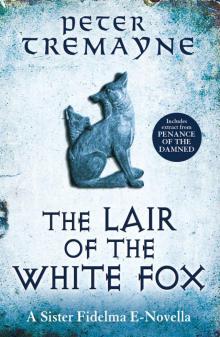 The Lair of the White Fox (e-novella) (Kindle Single)
The Lair of the White Fox (e-novella) (Kindle Single)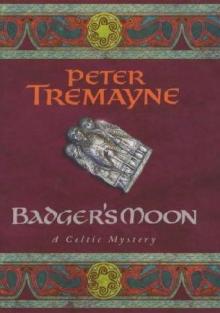 Badger's Moon sf-13
Badger's Moon sf-13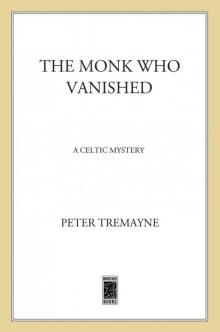 The Monk Who Vanished
The Monk Who Vanished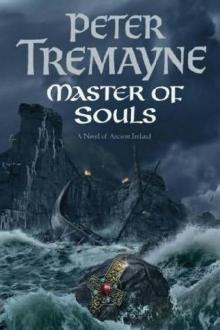 Master of Souls sf-16
Master of Souls sf-16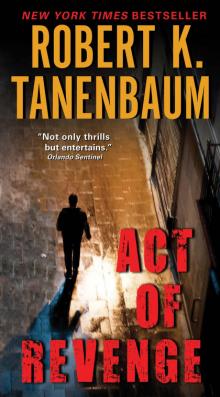 Act of Mercy sf-8
Act of Mercy sf-8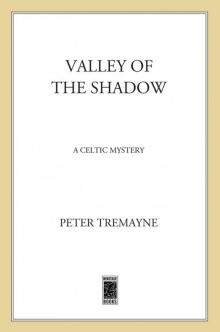 Valley of the Shadow
Valley of the Shadow Act of Mercy
Act of Mercy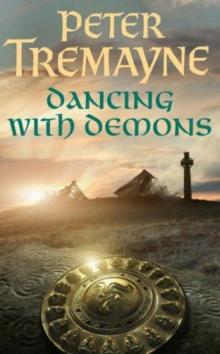 Dancing With Demons sf-18
Dancing With Demons sf-18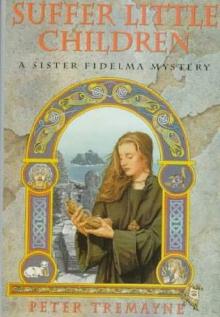 Suffer Little Children sf-3
Suffer Little Children sf-3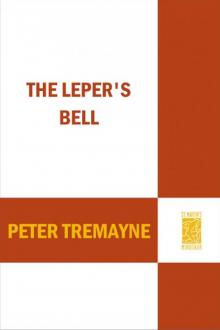 The Leper's Bell
The Leper's Bell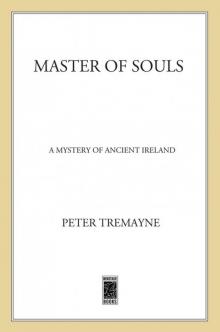 Master of Souls
Master of Souls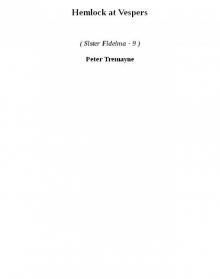 Hemlock at Vespers sf-9
Hemlock at Vespers sf-9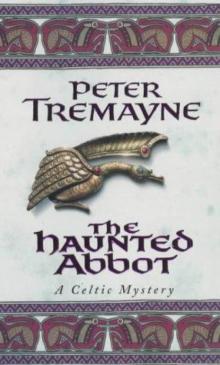 The Haunted Abbot sf-12
The Haunted Abbot sf-12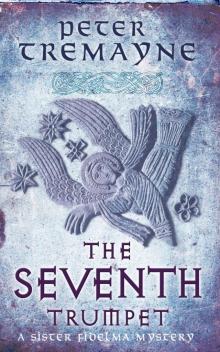 23- The Seventh Trumpet
23- The Seventh Trumpet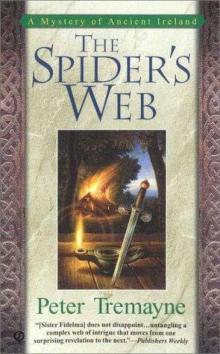 The Spider's Web sf-5
The Spider's Web sf-5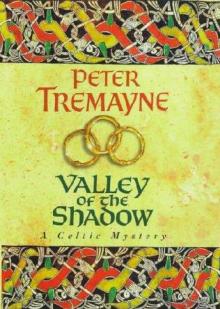 Valley of the Shadow sf-6
Valley of the Shadow sf-6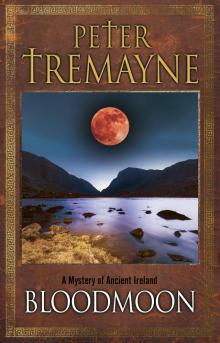 Bloodmoon
Bloodmoon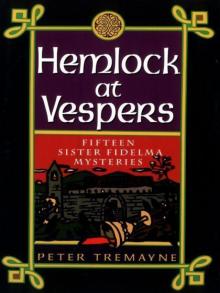 Hemlock at Vespers: Fifteen Sister Fidelma Mysteries
Hemlock at Vespers: Fifteen Sister Fidelma Mysteries The Council of the Cursed
The Council of the Cursed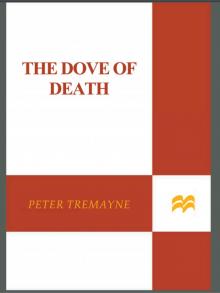 The Dove of Death
The Dove of Death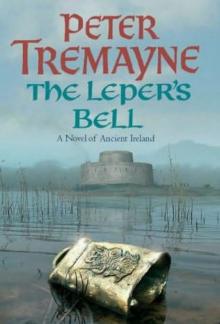 The Leper's bell sf-14
The Leper's bell sf-14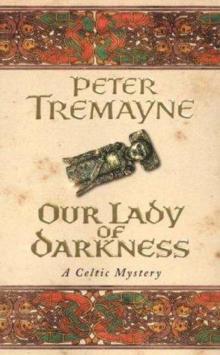 Our Lady of Darkness sf-10
Our Lady of Darkness sf-10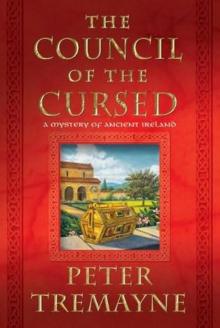 The Council of the Cursed sf-19
The Council of the Cursed sf-19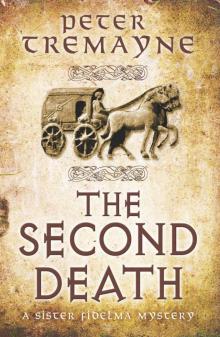 The Second Death (Sister Fidelma Mysteries)
The Second Death (Sister Fidelma Mysteries) The Fiery Devil
The Fiery Devil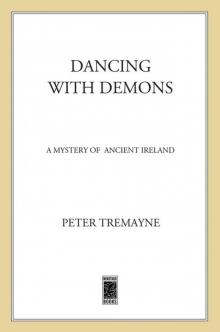 Dancing With Demons
Dancing With Demons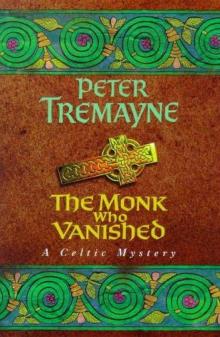 The Monk Who Vanished sf-7
The Monk Who Vanished sf-7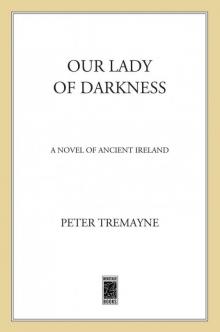 Our Lady of Darkness
Our Lady of Darkness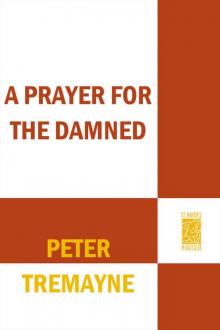 A Prayer for the Damned
A Prayer for the Damned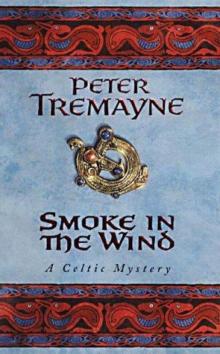 Smoke in the Wind sf-11
Smoke in the Wind sf-11 An Ensuing Evil and Others
An Ensuing Evil and Others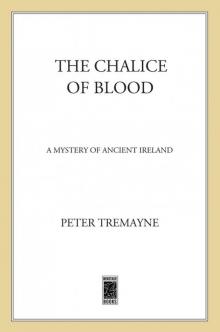 Chalice of Blood
Chalice of Blood